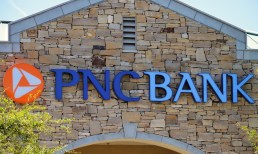As he told PYMNTS, AML laws apply directly, or indirectly, to all manner of financial institutions, from banks to FinTechs, stretching across prepaid card firms, currency exchanges and more.
“And,” Greenstein said, “if you’re the business customer of a bank and you’re building products that move money, these regulations also apply to you [indirectly].”
Enterprise customers, he said, wind up getting stuck in bank due diligence if they do not have compliance programs, which can in turn delay their access to critical financial services. And without those, touching on everything from checking accounts to working capital loans, companies can’t grow — and may not even make it to the launching stage.
See also: Banks Take Fresh Look at FinTech Acquisitions to Improve Customer Efficiencies
Companies that are moving money for the first time (through embedded finance, for example) can face particular challenges when they seek to confirm consumers’ identities.
Advertisement: Scroll to Continue
“Smaller, younger companies are often focused on [building products and] selling to their initial customers … and may not be focused on compliance,” Greenstein said.
Existential Threat
Bottom line: A lack of concrete compliance plans can prove an existential threat for fledgling firms, Greenstein said. There are some critical concerns and must-haves that need to be in place — a verifiable laundry list of things that need to be done.
For instance, companies should have a dedicated compliance officer, and they also need to have know your customer and fraud monitoring tools in hand. Critically, they need to know that the customers they’re transacting with aren’t on any sanctions watchlists.
From a process perspective, Greenstein said that companies should have transparent written procedures on how to identify and report suspicious transactions and report findings back to banking partners.
“You also need to independently review your program regularly,” he said.
Read more: Finance and Engineering Teams Use Tech to Close Their Communications Gap
None of the above is an easy technical or cultural lift. Often, Greenstein said, companies embrace as many as four different software tools for those tasks. Taking on that many disparate tech options drains significant engineering resources, but by embracing partnerships and platforms, companies can get up to speed on compliance with relative ease.
Customers now have access to a new wave of all-in-one platforms that can handle compliance, fraud and payment operations, easily integrating all of them. Additionally, they can eventually leverage them as a strategic differentiator.
Having the right fraud-fighting tools in place can help ensure that legitimate business is done with legitimate customers, he said. Streamlined onboarding processes for those end users can minimize the hassle of bringing new customers online, improving conversion.
Integrated compliance solutions, Greenstein said, “can really help executives get on with their real focus, which is running their businesses.”



